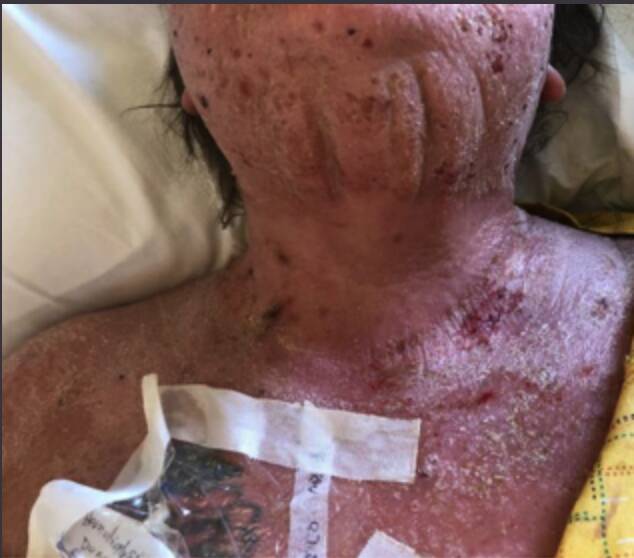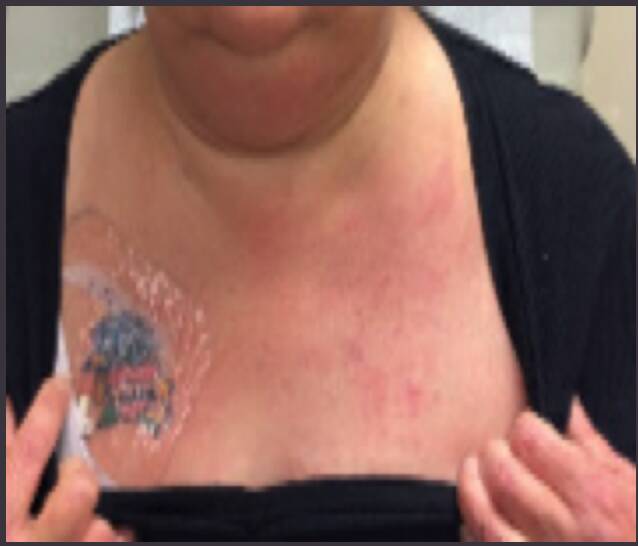Case Presentation: A 54-year-old female presented with acute kidney injury and nephrotic syndrome secondary to diabetic nephropathy requiring initiation of hemodialysis. She has a past medical history of chronic kidney disease stage III, diabetes mellitus, and chronic eczematous non-bullous rash for two years. The hospital course was complicated by a marked worsening of her chronic rash (Figure I) with disabling pruritus and diffuse scaly erythema. Bullae eventually developed mid hospitalization. Her complete blood cell count was significant for an absolute eosinophil count of 4320 cells/uL (normal <550) and IgE level of 4267 kU/L (normal <214). Dermatology was consulted and recommended blood work for bullous pemphigoid (BP) antibodies as well as skin biopsy for direct immunofluorescence (DIF). Blood work for BP antibodies using ELISA technique came back strongly positive with BP180 greater than 100 (normal less than 9) and BP230 of 97 (normal less than 9). DIF of skin biopsy was negative. Given the clinical picture in conjunction with hyper-eosinophilia, elevated IgE, and significantly elevated circulating BP180 and 230 antibodies, the diagnosis of Bullous Pemphigoid was made. The patient began 60 mg of prednisone daily with significant improvement on subsequent outpatient follow up (Figure II).
Discussion: The clinical presentation of BP is extremely broad (1) and many patients have atypical presentations (4) such as erythroderma or absence of bullae. In the initial phase, patients will commonly not have bullae and are more likely to present with a pruritic, non-specific eczematous or urticarial dermatitis, as in our case. Actually up to 20% of patients never develop bullae. DIF is the most sensitive test (90.8%) and considered the gold standard for diagnosis. However, biopsy has its technical challenges and combined positive serology has been shown to have a diagnostic sensitivity of 90% (1, 5); similar to DIF. Because of this some authors have proposed a new gold standard utilizing serology without a uniform DIF positive requirement (4).
Conclusions: Significant rashes can complicate inpatient admissions and dramatically affect a patient’s quality of life and, in the setting of erythroderma, mortality. It is important as Hospitalists to assist in the diagnosis and management of these rashes. The incidence of BP rises significantly in the elderly and should be considered in older adults with atypical rashes, especially in the setting of erythroderma, even in the absence of bullae. Eosinophilia can assist in the diagnosis but is only present in 50% of cases. Although DIF is the gold standard, it is not always diagnostic as biopsy site can affect diagnostic yield. Serology can now be used to supplement skin biopsy in the screening and diagnosis of BP.


